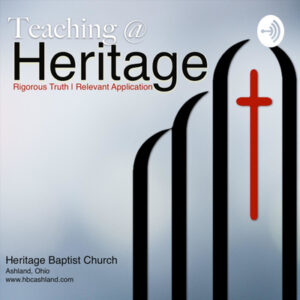
(Text and Audio)
Title: Two Awesome Events
I often draw on other sources, and always cite them appropriately. Why? Three reasons:
First, I believe its the honorable thing to do…I never want to pass someone else’s work off as my own.
Secondly, I want to demonstrate that with Google and a little persistence, any of you can seek out answers on your own when you questions confound you.
And Finally, I was once quoted by a legendary professor at AU, and I know somewhere each Sunday, writers, pastors and theologians, both living and dead, are wondering, “Is this the day? Is this the day that Ben quotes me in one of his sermons? Oh, Lord, please let it be today!” (Mark, be patient, your time is coming)
(read/pray)
Parallel Study:
Mark: Veil is torn, but no mention of the dead rising. (Mark 15)
Luke: No mention of the veil or the dead rising. (Luke 23)
John: No mention of the veil or the dead rising. (John 19)
What are we to make of this?
Answer First: It has everything to do with AUTHOR and AUDIENCE.
Let’s deal with these two events in reverse order:
- The Saints rising and walking: Why does Matthew record it?
(The Holy Spirit lead him to, but why him?)
From Tim Chafey (creationtoday.org)
I believe the reason that Matthew mentions it is that the Jews, with the exception of the Sadducees, believed that people would physically rise from the dead. They looked forward to a future resurrection, based on passages like Daniel 12:2, which states, “And many of those who sleep in the dust of the earth shall awake, some to everlasting life, some to shame and everlasting contempt.” When Jesus spoke to Martha before raising her brother Lazarus, He said, “Your brother will rise again” (John 11:23). Consistent with normative Jewish belief of the day, she replied, “I know that he will rise again in the resurrection at the last day” (John 11:24). Of course, Jesus had other plans and raised Lazarus moments later.
Clearly, first century Jews believed in bodily resurrection—they just thought it would happen at the end of time. For Matthew to describe an event where multiple people were raised in conjunction with Christ’s death, burial, and Resurrection would not be a distraction to his readers. They might be surprised by the timing of such an event, but they would not be appalled by the idea of people rising from the dead. They might view the event as a foretaste of what is to come and confirmation that Jesus was indeed who He claimed to be. Perhaps this is why so many priests eventually came to believe in Him (Acts 6:7).
You may be saying, “Okay, fair enough Pastor Ben…but how could the dead rise and Mark, Luke and John NOT record that in their Gospels??!!”
That’s a fair question, and Tim Chafey proposes another very reasonable answer:
If this is accurate, then why did the other Gospel writers fail to mention the event? I think the reason is that they were writing to audiences consisting largely of Gentiles in a Hellenized world. For the most part, the Greeks abhorred the idea of a bodily resurrection. So while these writers needed to stress Christ’s Resurrection, bringing up this event would be an unnecessary distraction for their readers.
An example of the typical Greek reaction to bodily resurrection can be seen in Acts 17. When Paul preached to the Athenians, they called him a babbler and a proclaimer of foreign gods “because he preached to them Jesus and the resurrection” (Acts 17:18). Then he was invited to speak in the Areopagus, and as soon as he mentioned Jesus rising from the dead, many in the Greek audience ridiculed him (Acts 17:31–32).
The Veil is Torn
Something that is mentioned, by both Mark and Matthew, however, is the veil being torn.
Question: Why is this more than just symbolically important?
Answer: This is a supernatural statement of communication from God the Father that everything has just changed. There is a new, improved covenant, a new, improved way to communicate with Him, a new, improved way to know and follow Him.
J.I. Packer:
The Veil of the temple was the curtain of separating the Most Holy Place from the rest of the sanctuary in the Temple. It symbolized the unapproachability of God. Jesus’s death was His sacrifice at the heavenly altar which opened the way to God, removing the veil.
PB Note: Also, being TORN, the Veil is destroyed. That way of communing with God is obsolete. (Don’t you think that is a message that Matthew wants to make very clear to his Jewish audience?)
Application or “So What?”
By destroying the veil, God is simultaneously saying two things to us:
- The age of the Law being fulfilled through Temple worship and Temple sacrifice is over.
- Jesus’s death caused the veil to be torn. I used to reside in the Holy of Holies. Now I reside wherever my son resides.
- Does my son reside in you?
As we close, I want you to Consider the Words of Jesus in John 10
25Jesus answered, “I did tell you, but you do not believe. The works I do in my Father’s name testify about me, 26but you do not believe because you are not my sheep. 27My sheep listen to my voice; I know them, and they follow me. 28I give them eternal life, and they shall never perish; no one will snatch them out of my hand. 29My Father, who has given them to me, is greater than all; no one can snatch them out of my Father’s hand. 30I and the Father are one.”
Pray/QA